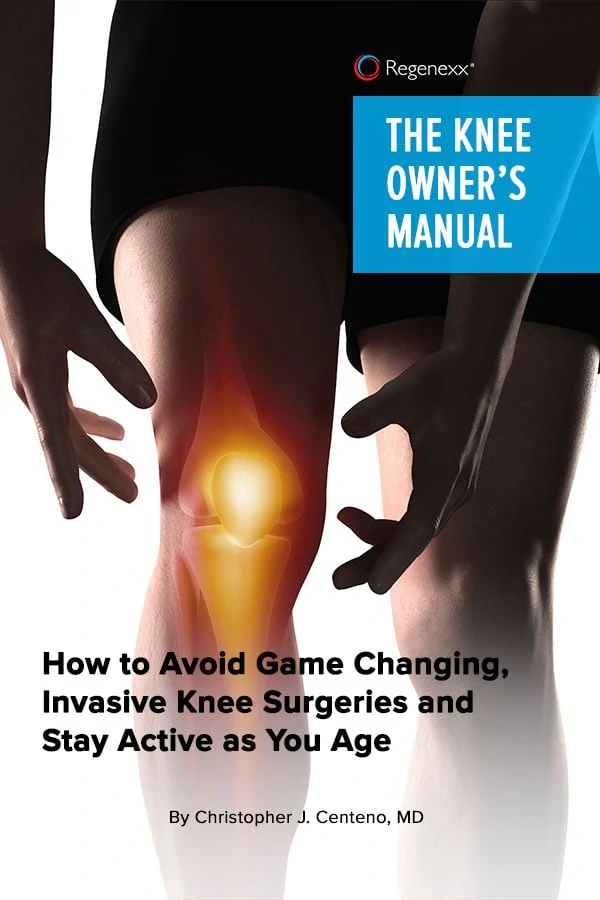Why should you avoid ACL surgery? With the introduction of interventional orthopedics, the traditional world of elective orthopedic surgery is changing, much like the traditional world of cardiac surgery did a few decades ago when interventional cardiology entered the scene. In the not too distant future, much of elective orthopedic surgery will be replaced by interventional orthopedics, which focuses on non-surgical treatments for musculoskeletal conditions. One of the structures in which these shifting orthopedic tides are apparent is the anterior cruciate ligament (ACL).
While ACL surgery is still common today, there are 6 reasons you should explore the interventional orthopedics approach to ACL tears and rethink your strategy and avoid ACL surgery with our non-surgical ACL tear treatment, the Perc-ACLR.
1. ACL Grafts Are Installed at the Wrong Angle
The ACL is a major ligament that stabilizes the knee. At about a 45-degree angle, the ACL stretches from the far front of the tibia (lower leg bone) to the back of the femur (upper leg bone). This precise positioning is imperative for controlling movement. When the native ACL is replaced with a graft (typically a tendon harvested from another area of the body, such as a hamstrings tendon), it is often installed at a steeper, nearly vertical in fact, angle. Clearly, this is a problem as it’s not in the proper position to control movement and keep the knee stable (see number 2 below), and this instability can lead to knee arthritis (see number 4 below) and other problems. In essence, an ACL surgery is providing you with a poor copy of your native ACL, and one that comes with many potential problems.

Want to Get Back to What You Love, Without Surgery and Medication?
2. ACL Surgery Can Cause Knee Instability
The ACL isn’t just a critical front-back stabilizer; it’s also a critical rotational stabilizer of the knee. In order to keep the knee rotationally stable, the ACL consists of two bundles. The purpose for ACL surgery is supposed to be to restabilize the knee, yet many times it’s actually doing the opposite. Why?
The two-bundle native ACL is usually replaced with a single-bundle graft ACL, and without two bundles, as is intended for proper functioning in the knee, there is excess rotation and, therefore, knee instability. This instability also creates excessive wear and tear on the cartilage (see number 4, arthritis, below), stresses the meniscus, and so on.
3. Position Sensors Can’t Be Reconnected, Causing Poor Muscle Control
As mentioned, ACL surgery involves replacing the native ACL with a graft. Unfortunately, though most patients believe their new ACL will function just like the original after surgery, that is rarely the case. In fact, ACL surgery often results in loss of muscle control and performance due to the inability to reconnect position sensors to the new ACL.
4. ACL Surgery Doesn’t Prevent Arthritis
One of the plugs you might hear while considering whether or not to have ACL surgery is that it prevents knee arthritis in the future; however, in our experience and based on research, ACL surgery won’t protect you from arthritis any more than not having surgery.
5. Many Experience Retears of the ACL Graft
Retears of the ACL, especially in young athletes, are, unfortunately, quite common with nearly one-third of those under the age of 20 experiencing ruptured ACL grafts or even tears of the ACL in the opposite knee. Additionally, in these young athletes who undergo ACL surgery, two-thirds will end up with an early onset of arthritis, by the age of 20.
6. Avoid ACL Surgery Because About 70% of ACL Tears Can Be Addressed Without Surgery
In interventional orthopedics, most ACL tears can be addressed without surgery with the percutaneous ACL repair procedure (perc-ACLR). In perc-ACLR, using real-time X-ray guidance (fluoroscopy), high-dose bone marrow stem cells are precisely injected into the ligament. As you can see on the before and after ACL images at this link, we have seen good evidence of healing in these ACLs.
A “new” ACL following surgery will simply never function exactly like the original ACL and understanding why its important to avoid ACL surgery is crucial. Keeping and properly treating your own ACL allows for the proper and intended alignment, retains all of your position sensors to keep the muscles controlled, and doesn’t require invasive and often unnecessary surgery. Therefore, nonsurgical solutions like the perc-ACLR procedure performed by a physician trained in interventional orthopedics should be considered.
Centeno-Schultz Clinic is conveniently located in Broomfield, Colorado – right between Denver and Boulder

